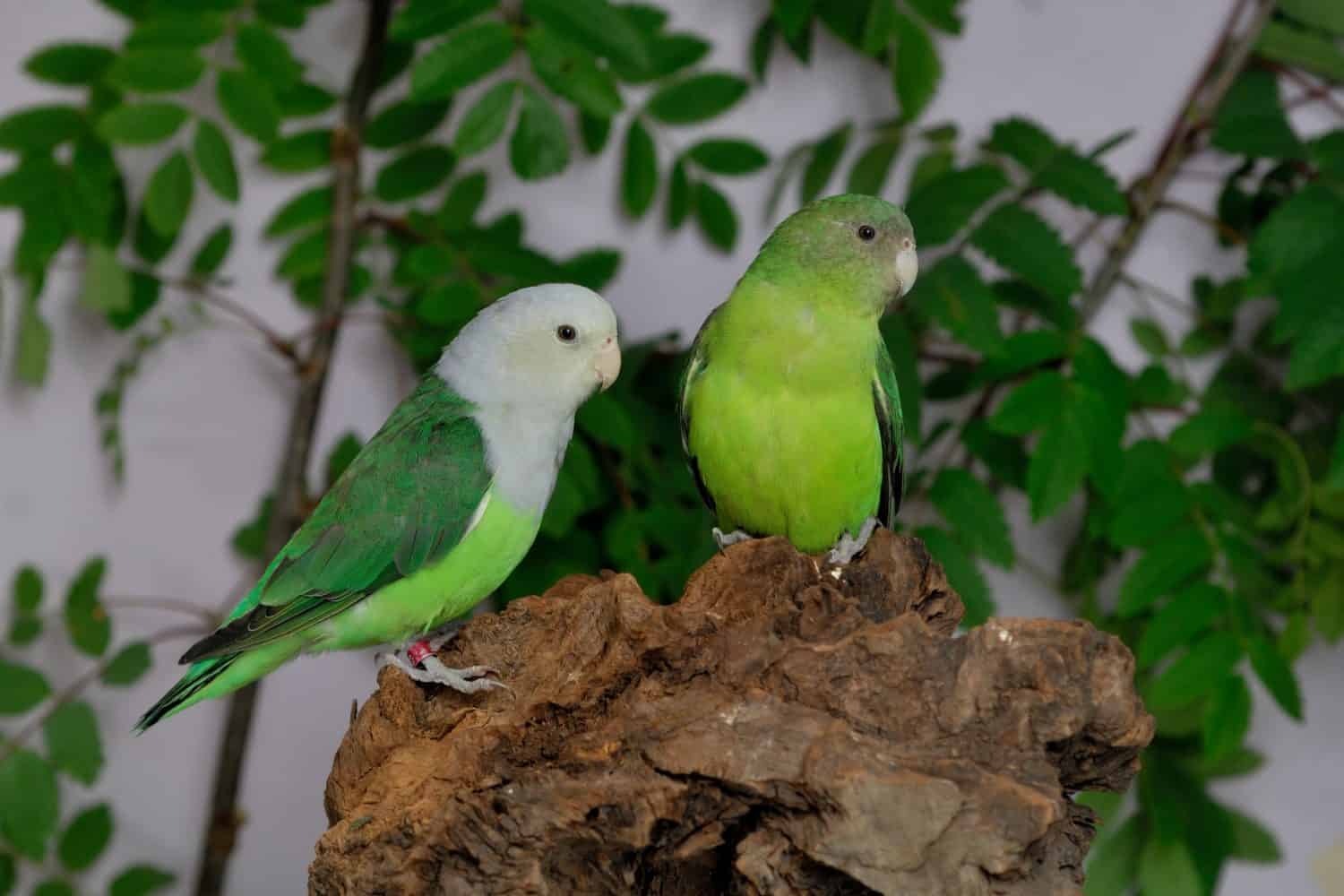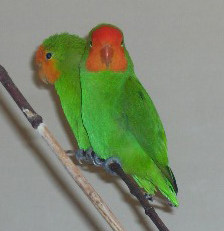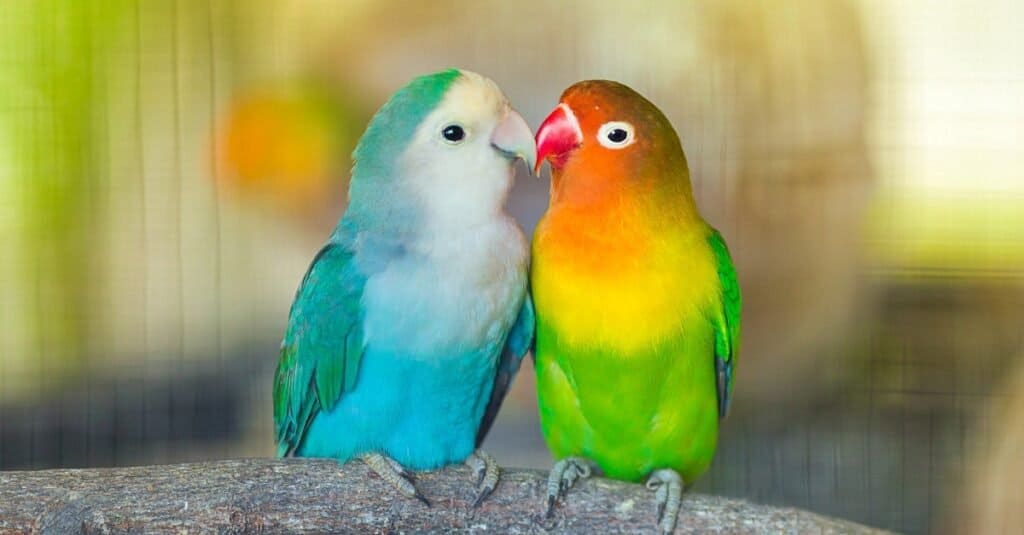Lovebirds are any of nine living parrot species in the genus Agapornis, all native to Africa, and their many domesticated varieties. Several clues can help tell males and females apart, although some are much more reliable than others. Read on to find out the difference between male vs. female lovebirds.
1. Color, Shape, and Size Differences
In three species of lovebirds, adult males and females have distinct color differences, a form of sexual dimorphism known as dichromatism. These species and their differences are summarized below.

Black-winged lovebird (
Agapornis taranta): the male has a bright red forehead and eye ring.
©Eckhard Lietzow/Shutterstock.com

Grey-headed lovebird (
Agapornis canus): the male has a gray head and chest.
©Eckhard Lietzow/Shutterstock.com

3. Red-headed lovebird (
Agapornis pullarius): the male has a brighter red head and beak.
©User:JoJan / CC BY-SA 3.0 – License
In addition, some aviculturists (bird breeders) claim that female lovebirds tend to have rounder heads and bigger beaks. However, this is just based on anecdotal evidence.
2. Pelvic Bone

A vet may be able to help sex a lovebird if they feel its pelvic bone during a physical examination.
©Nuva Frames/Shutterstock.com
To accommodate egg-laying, breeding females have a wider pelvic bone. Experienced handlers can learn to feel the differences between the male and female pelvic bones through a physical examination.
3. Mating and Eggs

A pair of wild Fischer’s lovebirds (
Agapornis fischeri) may look alike, but the female is in the nesting cavity incubating eggs.
©Danita Delimont/Shutterstock.com
Other than species with dichromatism, the surest way to tell male and female lovebirds apart is to witness them mate and see who ends up with eggs! As with most birds, the male will get on top of the female when they mate. Females then not only lay the eggs but are the sole incubators as well. Males will bring females food as they nest.
4. Behavior

Captive lovebirds tend to form strong pair bonds regardless of sex, so don’t assume a bonded pair must be a male and female!
©iStock.com/apichon_tee
Aviculturists note differences in how male and female lovebirds tend to behave in captivity that relate to their respective roles described above. For example, they often claim that female lovebirds more commonly tuck ripped paper into their feathers to carry back to their nest, whereas male lovebirds more commonly regurgitate food. There are also claims that females tend to be more territorial and aggressive, whereas males are more laid back and affectionate. However, much like people, every bird has its own unique personality, so these are not reliable ways to sex a captive lovebird.
5. DNA Test
Lastly, for the six species that are not dichromatic, often the only reliable way to sex birds before they exhibit breeding behavior is to test their DNA.
Summary of Male vs Female Lovebirds: 5 Key Differences
| Trait | Differences |
|---|---|
| 1. color, shape, size | plumage color differences (3 species); females with rounder heads and bigger beaks (anecdotal) |
| 2. pelvic bone | breeding females have wider pelvic bones (all species) |
| 3. mating and eggs | males on top during mating; females lay eggs; females incubate, males feed (all species) |
| 4. behavior | females tuck ripped up paper into feathers; males regurgitate food; females are more territorial and aggressive, males are more laid-back and affectionate (anecdotal, captive birds) |
| 5. DNA | males and females have different genomic DNA markers (all species) |
The photo featured at the top of this post is © Frank Vassen / Flickr – License / Original
Thank you for reading! Have some feedback for us? Contact the AZ Animals editorial team.






